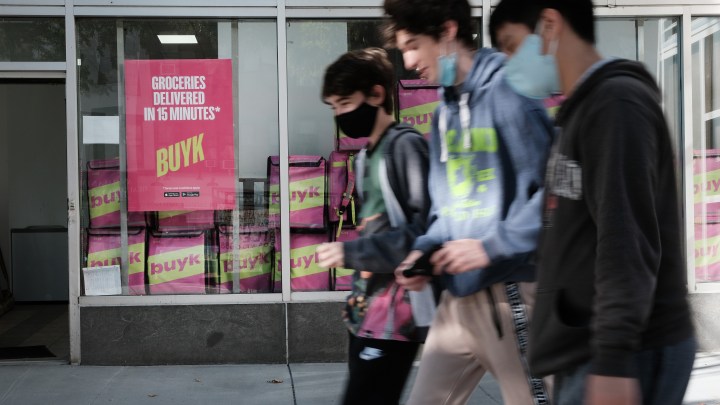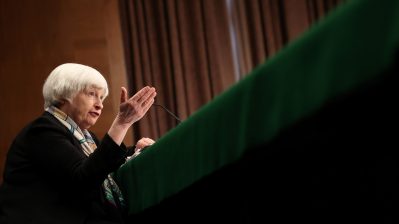
Why superfast grocery delivery is coming

Online grocery shopping was one of the darlings of the pandemic’s early days. And while curbside pickup is still going strong, grocery delivery is losing steam. Still, companies are investing more in it.
DoorDash opened its first DashMart fulfillment center this week, promising grocery delivery in 15 minutes. The first site is in Manhattan’s Chelsea neighborhood. There are plenty of other startups doing this throughout New York City.
If you live in Brooklyn, there’s a chance you might notice an interesting little grocery store that’s popped up recently. It’s brightly lit and on the ground floor of a glossy new building. But it’s just for show.
“The term we like to use is dark store. Really what we mean is that they’re not open to the public,” said James Walker, the CEO of Buyk, which is similar to that for-show store in Brooklyn.
Buyk launched in August and already has 25 locations in New York City. Its business model is different from delivery apps like Instacart, which depend on traditional supermarkets and gig workers. Instead, Buyk controls the inventory and hires its own employees.
Those are key parts to making sure deliveries happen fast, because that’s where the money is. If you look at the cost to fulfill a delivery order, said Bobby Gibbs at OliverWyman, “about half the cost is in putting items together, consolidating the purchase, and the other half is getting it into a person’s home.”
That’s why traditional grocery delivery costs about $8 per trip. If rapid grocery can drum up enough business, Gibbs said it can take on up to three times as many orders as traditional grocery delivery.
But there are still challenges. It costs to have real estate close to customers and there’s limited floor space for products. Buyk, for example, sells 3,000 items while the average grocery store sells around 30,000. And then there are expansion problems in cities that aren’t very dense.
“I think there’s a market for it, but it’s certainly not going to be in every city or for every customer occasion,” Gibbs said.
And that may be the thinking behind DoorDash’s new DashMart. It could eventually allow the company to become an all-in-one food app, said Fuad Hannon, vice president of new verticals — think a place for tacos and paper towels — because their customers “want a single platform where they can get perhaps dinner delivered tonight, but also the ingredients they need for breakfast tomorrow or for lunch tomorrow,” Hannon said. Of course, there’s a similar business in New York that serves those customers if they can walk a block or two: their friendly local bodega.
There’s a lot happening in the world. Through it all, Marketplace is here for you.
You rely on Marketplace to break down the world’s events and tell you how it affects you in a fact-based, approachable way. We rely on your financial support to keep making that possible.
Your donation today powers the independent journalism that you rely on. For just $5/month, you can help sustain Marketplace so we can keep reporting on the things that matter to you.

















